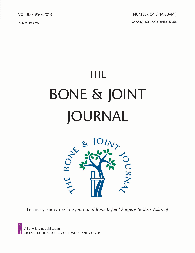
Arthroplasty
Using the transverse acetabular ligament as a guide in THA improves component alignment
This report has been verified
by one or more authors of the
original publication.
Bone Joint J. 2014 Mar;96-B(3):312-8. doi: 10.1302/0301-620X.96B3.32989.
80 patients undergoing total hip arthroplasty (THA) were randomized to have the acetabular component implanted either using the transverse acetabular ligament (TAL) as a guide or using a conventional freehand technique. The purpose of this study was to compare these two approaches with respect to the anteversion and inclination of the acetabular component. Results indicated that the TAL group had a more accurate mean anteversion when compared to the freehand technique; however this practice did not influence the inclination. Overall, the number of implants outside of the “safe zone” (5-25 degrees of anteversion and 30-50 degrees of inclination) was significantly lower in the TAL group.
Unlock the full article
Get unlimited access to OrthoEvidence with a free trial
Start TrialCritical appraisals of the latest, high-impact randomized controlled trials and systematic reviews in orthopaedics
Access to OrthoEvidence podcast content, including collaborations with the Journal of Bone and Joint Surgery, interviews with internationally recognized surgeons, and roundtable discussions on orthopaedic news and topics
Subscription to The Pulse, a twice-weekly evidence-based newsletter designed to help you make better clinical decisions
Exclusive access to original content articles, including in-house systematic reviews, and articles on health research methods and hot orthopaedic topics
Or continue reading this full article
Register Now

Subscribe to "The Pulse"
Evidence-Based Orthopaedics direct to your inbox.





































